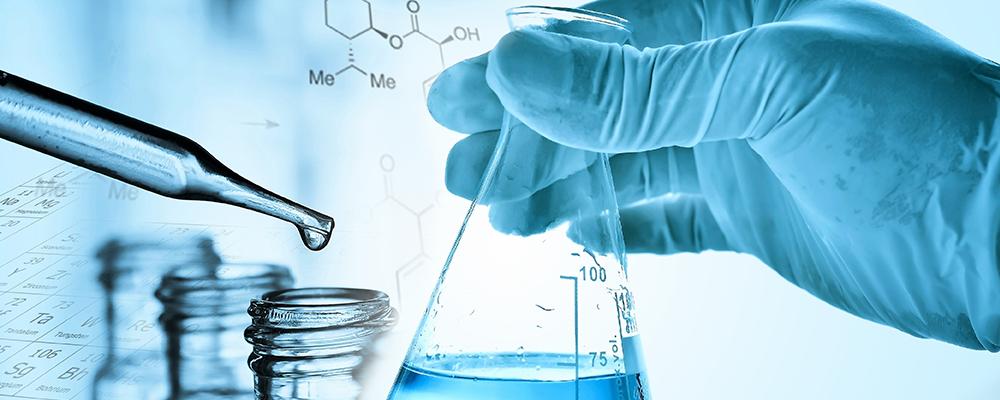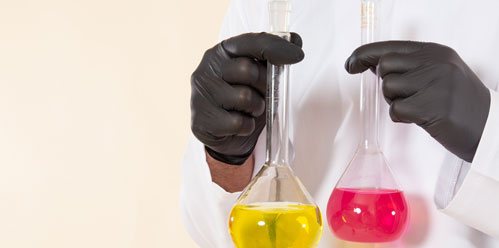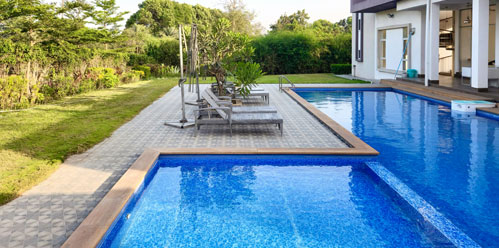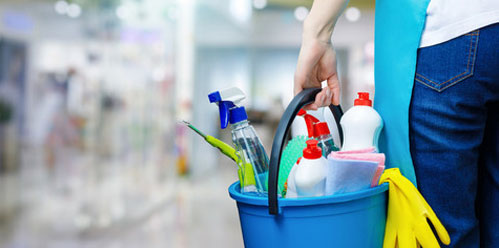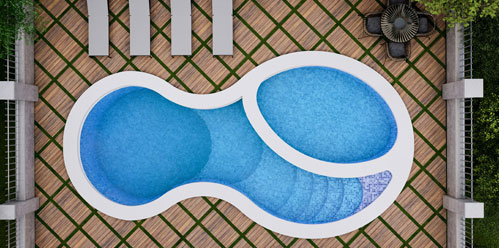Chloramine Smell in Pools
Excessive chloramine odor can mean a source of irritation to swimmers' eyes, lungs and skin. Pool odor is not caused by chlorine, but by chloramines, which are chemical compounds that can form in pool water.
What is Chloramine?
Chloramines are a group of chemicals formed by the combination of chlorine and nitrogen compounds (such as ammonia).
How is Chloramine Formed in Pools?
The chlorine added to pool water reacts with organic materials present in the water (sweat, cosmetics, urine, etc.) to form chloramines.
Why Should We Be Concerned About Chloramines?
Chloramines can cause the pool water to smell and may irritate the eyes. In some cases, they can also lead to respiratory problems. Chloramines are an undesirable condition that decreases the quality of pool water and can negatively affect the health of swimmers.
Chloramines result from the combination of chlorine disinfectants with sweat, cosmetics, and urine that enters the pools from swimmers' bodies. Chlorine disinfectants are added to pool water to eliminate microbes that can cause diarrhea, swimmer's ear, and athlete's foot. Sweat, oils, and urine are unwanted additions to pool water. Swimmers can help minimize the pool smell by showering before entering the pool to clean these substances from their skin.
The Chemistry of Pool Odor
When chlorine disinfectants are added to water, two chemicals that help eliminate waterborne microbes are released: hypochlorous acid and hypochlorite ion. These two chemicals are collectively known as "free available chlorine" or FAC. Pool operators manage the FAC levels in the pool water for the safety of swimmers. Their challenge arises from the reduction of FAC when it reacts with sweat, oils, and urine from swimmers to form chloramines.
One way chloramines are formed in pool water is through the reaction of hypochlorous acid with ammonia, a component of sweat and urine. When hypochlorous acid reacts with ammonia, three chemical reactions can occur, each involving the replacement of hydrogen ions with chlorine ions. When one of ammonia's hydrogen ions replaces chlorine, monochloramine is formed. The replacement of another hydrogen ion with chlorine produces dichloramine. Additionally, it is also possible to form trichloramine, also known as nitrogen trichloride, when all three hydrogen ions of ammonia replace chlorine.
Monochloramine is sometimes intentionally added to water because it is actually a beneficial water disinfectant. For example, drinking water is sometimes treated with monochloramine. Dichloramine and especially trichloramine are the chloramines most responsible for pool odor. Showering before entering the pool can help minimize the formation of these two chloramines.
Management of Chlorine in Pools
When FAC combines with ammonia to form chloramines, the FAC in the pool water decreases. Lowering FAC leaves less chlorine to eliminate microbes in the pool. The amount of chlorine that is "combined" in chloramine compounds and therefore not available as free chlorine is referred to as combined available chlorine (CAC). [The total of FAC and CAC is called total chlorine (TC).]
The Pool and Hot Tub Alliance recommends that FAC concentrations in pool water should remain between 1.0 – 4.0 parts per million (FAC should never fall below parts per million). CAC levels should be less than 0.2 parts per million. Pool managers can use test kits to measure both FAC and TC.
Cleaning and Safety with Pool Chemicals
Pool chemicals are essential components used to keep swimming pools clean, clear, and hygienic. These chemicals eliminate harmful microbes in the pool water while maintaining the water's pH level and preventing algae growth. Regularly applied pool chemicals create a safe environment for swimmers and help prolong the life of the pool. Various pool chemicals, such as chlorine, pH regulators, algae preventers, and water balancers, play a fundamental role in pool maintenance. Using the right pool chemicals is crucial to keeping your pool healthy and clean.
Minimizing Pool Odor
Swimmers with red and irritated eyes are known to complain that there is "too much chlorine in the pool." However, when the pool water is irritating, it may actually mean that there is insufficient chlorine in the pool.
A well-managed pool should not have an odor. Chloramines responsible for pool odor can be eliminated through the use of chlorine. "Shock treatment" or "super chlorination" is the practice of adding extra chlorine to pools to eliminate organic compounds that combine with ammonia and form chloramines. To effectively eliminate chloramines through shock treatment, the FAC concentration in pool water should be approximately ten times that of CAC.
Pool Rules
Properly disinfected pool water is essential for the health and safety of swimmers. Pool managers are responsible for adjusting pool water chemistry to reduce infection risk for swimmers.
This checklist provides another way for swimmers to determine if a pool is safe for swimming:
- Does the pool water look clear and blue? You should be able to see drains or painted lines on the bottom of the pool. If the water is cloudy and discolored, do not enter the pool, as there may be algae present.
- If the pool walls around the waterline are slimy, do not enter the pool. There are likely microbes living on the wall.
- If there is a strong chemical odor around the pool, do not enter. If there is a strong chemical smell, the pool manager may need to treat the water.
To help keep the pool clean, shower before entering the pool to remove substances that can lead to chloramine formation, and encourage young children to use the bathroom regularly.





